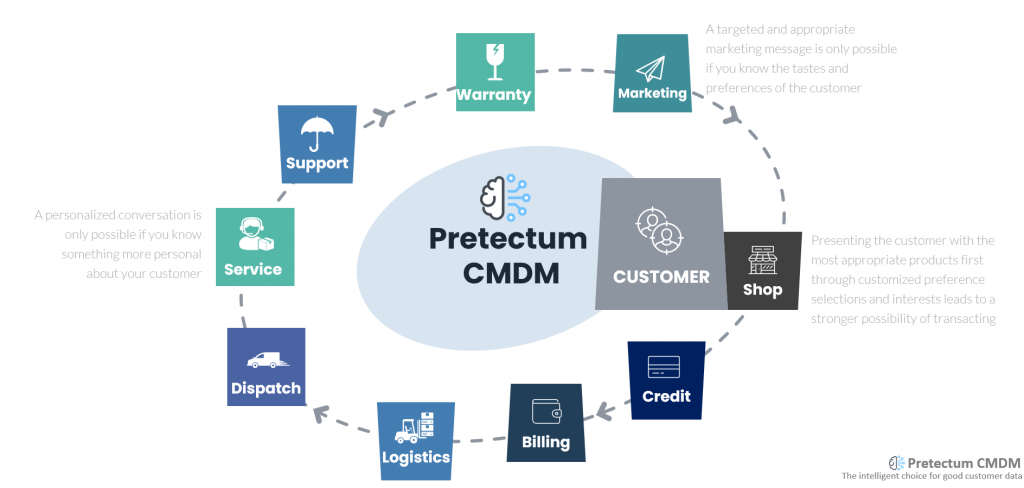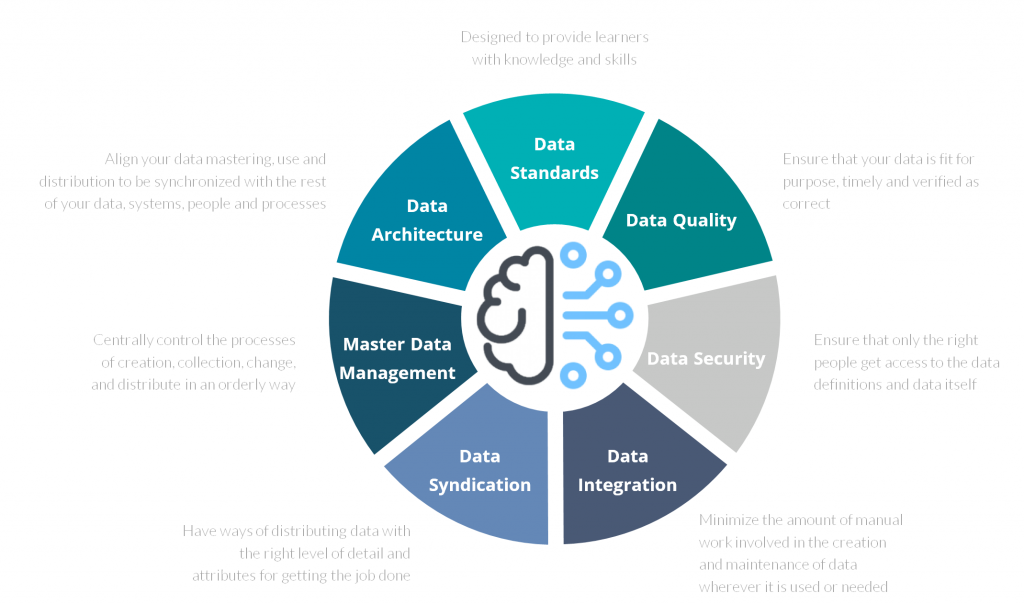Master Data Management as a Service (MDaaS) is transforming many organizations in terms of the way that they manage their customer data, offering scalability, flexibility, and cost-efficiency.
However, adopting an MDaaS solution like Pretectum CMDM – a modern, SaaS-based Customer Master Data Management platform – comes with its own set of challenges. From deployment flexibility to stakeholder buy-in and integration complexities, businesses must navigate many hurdles to unlock the full potential of a centralized, yet federated, customer master.
MDaaS adoption doesn’t come without some hurdles so I’ll try to elaborate on them accompanied with some ideas on best practices for successful implementation, and why Pretectum CMDM should stand out as a leading choice for organizations of all sizes, thanks to its server-less, multi-tenant architecture and support for hybrid deployment models.

Flexible Deployment Models for Every Organizational Maturity Level
One of the biggest advantages of SaaS based CMDM like Pretectum, is its ability to adapt to an organization’s maturity level in managing customer data. Not all businesses are ready for a full-scale, centralized MDM deployment.
Some may need a federated hub-and-spoke model, where business units in different geographies maintain localized control while still aligning with a global master. Others might prefer a fully centralized approach, where a single source of truth governs all customer data across the enterprise.
Pretectum supports all these approaches, allowing companies to evolve their MDM strategy as their needs grow.
A startup might begin with a simple cloud-based MDM, while a multinational could deploy a hybrid model-keeping sensitive data on-premise while leveraging the cloud for scalability. This flexibility ensures that businesses don’t have to overhaul their entire data infrastructure overnight but can instead progress at their own pace.
Common Pitfalls in MDaaS Adoption and How to Avoid Them
Despite the clear benefits of MDaaS, many organizations may stumble during their implementation. Two of the most critical challenges are data migration and change management.
Data Migration: Moving from Chaos to Clarity
Legacy systems often contain fragmented, duplicate, or inconsistent customer data. Migrating this into a clean, unified MDM platform requires meticulous planning. Of course, poor data quality at the outset can lead to garbage in, garbage out (GIGO), undermining the entire MDM initiative.

Pretectum CMDM mitigates this risk with the ability to incorporate both ETL and ELT based approaches to data cleansing and matching capabilities based on data schema rules and metadata based tagging, ensuring that only the most accurate, deduplicated records may enter the system. A best practice here may be to start small-migrate a subset of data first, validate its integrity, and then scale up. A phased approach minimizes disruption and allows for early error detection.
Change Management: Overcoming Resistance to a Single Source of Truth
Even the best MDM solution will fail if users resist it. Departments accustomed to managing their own customer data may view a centralized MDM as a loss of control. To combat this, organizations must communicate the benefits clearly-better analytics, improved customer experiences, and reduced compliance risks.
Pretectum’s intuitive UI, flexible deployment model and role-based access controls (RBAC) help ease this transition by allowing business units to retain governance over their data while still contributing to a unified master. Training and ongoing support are also crucial-users need to understand how the system makes their jobs easier, not harder.
Ensuring Stakeholder Buy-In and User Adoption
For an MDM initiative to succeed, executive sponsorship is pretty much a non-negotiable if you want widespread cultural adoption. Executive leadership must champion the project, aligning it with broader business goals like customer experience improvement or regulatory compliance.
Beyond leadership, involving key stakeholders early-IT, sales, marketing, and customer service, ensures that the solution meets cross-functional needs. Pretectum’s collaborative data stewardship model facilitates this by allowing different teams to contribute to and validate customer data without creating silos.
User adoption hinges on usability. Pretectum’s intuitive UI and self-service capabilities empower non-technical users to manage data without heavy IT dependency. When employees see tangible benefits – like faster access to reliable customer data – they become advocates rather than obstacles.

Vendor Selection: Why Scalability and Integration Capabilities Matter
Not all MDM solutions are created equal. When evaluating an MDaaS provider, scalability and integration capabilities should be top priorities.
Scalability: Growing Without Constraints
Many traditional MDM systems struggle with scaling, requiring costly infrastructure upgrades. Pretectum CMDM, built on a serverless, multi-tenant architecture, eliminates this problem. Whether an organization has 1,000 or 100 million customer records, the platform scales dynamically, ensuring performance never degrades.
Integration: Connecting to Anything, Anywhere
A modern MDM must seamlessly integrate with CRM, ERP, marketing automation, and even legacy systems. Pretectum excels here with hyper-enabled connectivity, supporting REST APIs, webhooks, and event-driven architectures. This means businesses can pull data from any source – whether in the cloud or on-premise – and push enriched master data back to downstream systems in real time.
Why Pretectum CMDM Stands Out in the MDaaS Landscape
Here’s a small selection of reasons why, if you’re evaluating customer MDM solutions, we thinking Pretectum CMDM should be part of your candidates for evaluation.
- True SaaS Efficiency: No hardware provisioning, no maintenance – just instant access to a fully managed MDM.
- Federated Master Data Governance: Business units maintain autonomy while contributing to a golden record.
- Cloud First Future-Proof Architecture: Our AWS bases server-less scaling means no performance bottlenecks, ever.
- Unmatched Integration Flexibility: Connect to any system, whether cloud-native or legacy.
For small businesses, this means low-cost entry with enterprise-grade capabilities. For large enterprises, it means global consistency without sacrificing local agility.
Are you ready to start Your MDM Journey with Confidence?
Implementing MDaaS doesn’t have to be daunting. With the right strategy – phased migration, strong change management, and stakeholder engagement – all types of organizations can unlock the full potential of their customer data.
Pretectum CMDM provides the flexibility, scalability, and ease of integration needed to succeed in today’s data-driven world. Whether you’re just beginning your MDM journey or looking to modernize an existing setup, Pretectum offers a future-proof solution that grows with your business.
Ready to transform your customer master data? Explore Pretectum CMDM today and see how effortless MDM can be.


